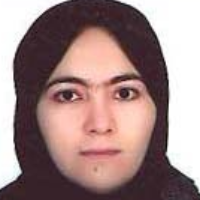Geochemistry and petrogenesis of the Feshark intrusion (NE Isfahan city)
Author(s):
Article Type:
Research/Original Article (دارای رتبه معتبر)
Abstract:
IntroductionGranitic rocks are the most abundant rock types in various tectonic settings and they have originated from mantle-derived magmas and/or partial melting of crustal rocks. The Oligo-Miocene Feshark intrusion is situated in the northeast of the city of Isfahan, and a small part of UrumiehDokhtar Magmatic Arc is between 52º21' E to 52º26'E and 32º50' N to - 32º53' N. The pluton has intruded into lower Eocene volcanic rocks such as rhyolite, andesite, and dacite and limestone.
Analytical methodsFifteen representative samples from the Feshark intrusion were selected on the basis of their freshness. The major elements and some trace elements were analyzed by X-ray fluorescence (XRF) at Naruto University in Japan and the trace-element compositions were determined at the ALS Chemex lab.
ResultsThe Feshark intrusion can be divided into two phases, namely granodiorite with slightly granite and tonalite composition and quartz diorite with various quartz diorite and quartz monzodiorite abundant enclaves according to Middlemost (1994) classification. The quartz diorite show dark grey and are abundant at the western part of the intrusive rocks. Granodiorite are typically of white-light grey in color and change gradually into granite and tonalite. The granodiorite and granite rocks consist of quartz, K-feldspar, plagioclase, biotite, and amphibole, whereas in the quartz diorites the mineral assemblages between different minerals are very similar to those observed in the granodiorite. However, amphibole and plagioclase are more abundant and quartz and K-feldspar modal contents are lower than in the granodiorite whereas pyroxene occurs as rare grains. They are characterized as metaluminous to mildly peraluminous based on alumina saturation index (e.g. Shand, 1943) and are mostly medium-K calc-alkaline in nature (Rickwood, 1989).
DiscussionIn the Yb vs. La/Yb and Tb/Yb variation diagrams (He et al., 2009), the studied samples show small variations in La/Yb and Tb/Yb ratios, suggesting fractional crystallization. Chondrite-normalized REE patterns (Sun and McDonough, 1989) of all the samples essentially have the same shape with light REE (LREE) enrichment, flat high REE (HREE) and significant negative Eu anomalies. All of the samples exhibit similar trace element abundance patterns, with enrichment in large ion lithophile elements (LILE) and negative anomalies in high field strength elements (HFSE; e.g. Ba, Nb, Ta, P, and Ti) compared to primitive mantle (Sun and McDonough, 1989). The enrichment of LILE and LREE relative to the HFSE and HREE along with Nb, Ta, and Ti anomalies display close similarities to those of magmatic arc granites (Pearce et al., 1984) and also negative NbTi anomalies are thought to be related to the fractionation of Ti-bearing phases (titanite, etc.). Moreover, these are the typical features of arc and / or crustal contamination (Kuster and Harms, 1998), while the negative P anomalies should result from apatite fractionation. The increasing of Ba and slightly decreasing Sr with increasing Rb, indicate that plagioclase fractionation plays an important role in the evolution of the studied intrusion. Tectonic environment discrimination diagrams such as Nb vs. Y, Nb vs. Yb (Pearce et al., 1984) and Th/Yb vs. Ta/Yb (Pearce, 1983) with enrichment in the LILE and LREE relative to HFSE and HREE and negative anomaly in the Nb, Ti and Eu indicate that their initial magma is generated in the subduction zone related to an active continental margin setting. þThe rocks genesis determining diagrams such as Nb vs. Nb/U (Taylor and McLennan, 1985), Ti vs. Ti/Zr (Rudnick et al. 2000), (La/Sm)cn vs. Nb/U (Hofmann et al., 1986), and Sr/Y vs. Y (Sun and McDonough, 1989) show that the magma was probably generated by partial melting of amphibolitic continental crust.
Analytical methodsFifteen representative samples from the Feshark intrusion were selected on the basis of their freshness. The major elements and some trace elements were analyzed by X-ray fluorescence (XRF) at Naruto University in Japan and the trace-element compositions were determined at the ALS Chemex lab.
ResultsThe Feshark intrusion can be divided into two phases, namely granodiorite with slightly granite and tonalite composition and quartz diorite with various quartz diorite and quartz monzodiorite abundant enclaves according to Middlemost (1994) classification. The quartz diorite show dark grey and are abundant at the western part of the intrusive rocks. Granodiorite are typically of white-light grey in color and change gradually into granite and tonalite. The granodiorite and granite rocks consist of quartz, K-feldspar, plagioclase, biotite, and amphibole, whereas in the quartz diorites the mineral assemblages between different minerals are very similar to those observed in the granodiorite. However, amphibole and plagioclase are more abundant and quartz and K-feldspar modal contents are lower than in the granodiorite whereas pyroxene occurs as rare grains. They are characterized as metaluminous to mildly peraluminous based on alumina saturation index (e.g. Shand, 1943) and are mostly medium-K calc-alkaline in nature (Rickwood, 1989).
DiscussionIn the Yb vs. La/Yb and Tb/Yb variation diagrams (He et al., 2009), the studied samples show small variations in La/Yb and Tb/Yb ratios, suggesting fractional crystallization. Chondrite-normalized REE patterns (Sun and McDonough, 1989) of all the samples essentially have the same shape with light REE (LREE) enrichment, flat high REE (HREE) and significant negative Eu anomalies. All of the samples exhibit similar trace element abundance patterns, with enrichment in large ion lithophile elements (LILE) and negative anomalies in high field strength elements (HFSE; e.g. Ba, Nb, Ta, P, and Ti) compared to primitive mantle (Sun and McDonough, 1989). The enrichment of LILE and LREE relative to the HFSE and HREE along with Nb, Ta, and Ti anomalies display close similarities to those of magmatic arc granites (Pearce et al., 1984) and also negative NbTi anomalies are thought to be related to the fractionation of Ti-bearing phases (titanite, etc.). Moreover, these are the typical features of arc and / or crustal contamination (Kuster and Harms, 1998), while the negative P anomalies should result from apatite fractionation. The increasing of Ba and slightly decreasing Sr with increasing Rb, indicate that plagioclase fractionation plays an important role in the evolution of the studied intrusion. Tectonic environment discrimination diagrams such as Nb vs. Y, Nb vs. Yb (Pearce et al., 1984) and Th/Yb vs. Ta/Yb (Pearce, 1983) with enrichment in the LILE and LREE relative to HFSE and HREE and negative anomaly in the Nb, Ti and Eu indicate that their initial magma is generated in the subduction zone related to an active continental margin setting. þThe rocks genesis determining diagrams such as Nb vs. Nb/U (Taylor and McLennan, 1985), Ti vs. Ti/Zr (Rudnick et al. 2000), (La/Sm)cn vs. Nb/U (Hofmann et al., 1986), and Sr/Y vs. Y (Sun and McDonough, 1989) show that the magma was probably generated by partial melting of amphibolitic continental crust.
Keywords:
Language:
Persian
Published:
Journal of Economic Geology, Volume:9 Issue: 2, 2017
Pages:
313 to 334
magiran.com/p1771102
دانلود و مطالعه متن این مقاله با یکی از روشهای زیر امکان پذیر است:
اشتراک شخصی
با عضویت و پرداخت آنلاین حق اشتراک یکساله به مبلغ 1,390,000ريال میتوانید 70 عنوان مطلب دانلود کنید!
اشتراک سازمانی
به کتابخانه دانشگاه یا محل کار خود پیشنهاد کنید تا اشتراک سازمانی این پایگاه را برای دسترسی نامحدود همه کاربران به متن مطالب تهیه نمایند!
توجه!
- حق عضویت دریافتی صرف حمایت از نشریات عضو و نگهداری، تکمیل و توسعه مگیران میشود.
- پرداخت حق اشتراک و دانلود مقالات اجازه بازنشر آن در سایر رسانههای چاپی و دیجیتال را به کاربر نمیدهد.
In order to view content subscription is required
Personal subscription
Subscribe magiran.com for 70 € euros via PayPal and download 70 articles during a year.
Organization subscription
Please contact us to subscribe your university or library for unlimited access!




